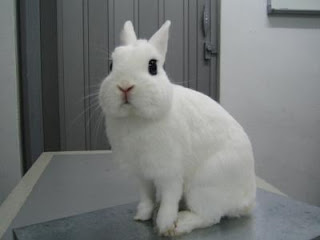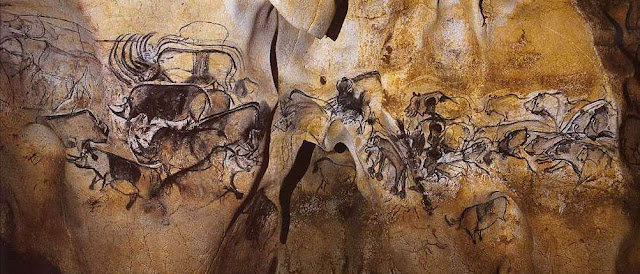|
|
|---|
Tuesday, May 31, 2011
Well, since I was talking about the Civil War yesterday, and about how Decoration Day got invented right after that war, Mom started thinking about her great-grandfather, William Lee. Mom actually had at least three great-grandfathers who fought in the Civil War, all on the Confederate side. But Mom knows the most about her great-grandfather Lee. Also she has a photo of him and some of his war buddies, which was taken sometime after the war, when they all got together for a reunion.
 |
| William Lee is in the back row, 2nd from the right. James Lee is in the back row, 2nd from the left. |
William Lee grew up in the northwest corner of Arkansas, in Benton County. Anyway, in October of 1861, when William was 17, he and his older brother James went to Bentonville and enlisted. They were in Company F of the 15th NW Arkansas Regiment. They fought in several battles, including Corinth, Elkhorn, Hatchie Bridge, and maybe Shiloh. But we don't know all the details because Mom only got as far as getting the muster rolls from the National Archives.
Anyway, after a while, what happened was that the part of the Confederate Army that William and James were in, which was commanded by Lt. Gen. John C. Pemberton, ended up in Jackson, Mississippi. But then Maj. Gen. Ulysses S. Grant's Army of the Tennessee came in and fought them and captured the city of Jackson. So the rebels started backing up toward Vicksburg. Or maybe you're supposed to say "falling back" instead of "backing up." I don't know a whole lot of military terms.
 |
| General Pemberton |
While they were going towards Vicksburg, they fought a couple of big battles, and one was called Champion's Hill. The Confederates were outnumbered there, and they lost the battle, so they went on to the Big Black River, where they used a bridge and a boat to cross the river. Then when they all got across, they burned the bridge and the boat. Which was supposed to make it harder for the Union soldiers to get over the river.
But the Union soldiers still caught up with them, and a lot of rebel troops died, either because they got shot or because they drowned. Besides which, 1,700 soldiers were captured, including my mom's great-great uncle, James Lee, who was a 2nd lieutenant. So after that, Lt. James Lee spent the rest of the war as a prisoner, first at Johnson's Island, Ohio, and later at Ft. Delaware.
Meanwhile, Mom's great-grandfather, Pvt. William Lee, went with the rest of General Pemberton's army to Vicksburg. You may already know that Vicksburg is right on the Mississippi River, and one reason you may know this is because Vicksburg got flooded recently, and so did a bunch of other cities along the Mississippi. And back in Civil War days, Vicksburg was very important to the South because they wanted to keep control of the river. But of course, the North also wanted to control the river, and that's what General Grant was up to with this whole campaign. He was trying to win Vicksburg so that the North could say which boats got to go up and down the Mississippi.
Since Vicksburg was such an important city, it already had lots of forts and trenches and all kinds of stuff that was needed to defend it. So the rebels went right in and got busy with the defending. General Grant thought he could beat them anyway, but he tried twice, and he couldn't do it because too many of his men got killed. So he decided to make a siege instead. Which meant he put soldiers all around the city so that nobody could go in or come out. And no supplies or food could get in either. Plus out in the river, there were these boats with iron sides and big cannons on them.
The siege started on May 18, 1863, and all the soldiers who were defending Vicksburg, including Mom's great-grandfather, and all the people who lived in Vicksburg, were just kind of stuck there. And besides the soldiers, it was mostly women and children and old people who were there because all the men were off someplace fighting in other battles.
The Union troops and the Union battleships were all the time shooting bombshells at the town, and people were afraid that their houses would get hit and fall down on them and kill them. So they started digging caves into the hillsides of the town, with a lot of help from their slaves, and they lived in the caves where it was safer. Some of these caves had several rooms, and they had all the nice furniture from the people's real homes.
 |
| Living in a cave at Vicksburg |
But after a while, there was no more food to eat. And people ate whatever animals they had there, including rats. I don't know if they ate dogs or not, but sadly, I think they might have. Then finally, everyone got so hungry, and the situation got so bad that General Pemberton told General Grant that he would surrender, which he did on July 4, 1863.
When the Union won Vicksburg, that was pretty much a turning point in the war, especially since it happened just one day after the Union won at Gettysburg. The South got kind of cut in half because they couldn't get troops or supplies or anything across the Mississippi anymore between the east and the west parts of the Confederacy.
 |
| Currier and Ives print |
The terms of the Vicksburg surrender made all the rebel soldiers be "on parole," and each soldier had to sign a paper that said he would never, ever fight against the U.S. Army again. General Grant decided to do things this way instead of taking all the Confederates prisoner, because having so many prisoners to deal with would be a big pain in the butt and would slow his army down.
 |
| Mom has a copy of the parole paper that her great-grandfather signed, but she was too lazy to dig it out. |
So all the soldiers signed a paper, and then they got to leave Vicksburg. A lot of them joined another unit later and did some more fighting. But we think that Pvt. William Lee must have gone home to Arkansas and stayed there because there is no record of him fighting anymore. Then when the war ended in 1865, James Lee also went home to Arkansas.
William Lee got married to a woman named Sarah, and they had seven children. They named the oldest one Robert Edward Lee. It's pretty easy to guess how they came up with this name for their son! Mom likes to tell people that she is related to Robert E. Lee, which she is, but it's not the Robert E. Lee.
The fourth child of William and Sarah Lee was Mom's grandmother, Nancy Idella Lee. But everybody called her Della. She died before Mom was born, so Mom never got to meet her, but at least she has some pictures of her.
So that's your history lesson for today. Just remember that if you want to avoid having to eat rats, you should stay out of any towns that are under siege!
Monday, May 30, 2011
Today is a holiday called Memorial Day, when a lot of people will be going to cemeteries to put flowers on graves. Also a lot of people will have picnics and go camping or boating or to the swimming pool. Nowadays, Memorial Day is kind of like the official beginning of summer, but that is not the real reason the holiday got invented.
 |
| Gettysburg National Cemetery |
But Wikipedia, which is always right about everything, says that the first time Memorial Day was observed was on May 1, 1865, in Charleston, South Carolina. And what happened that day was that a group of former slaves decorated the graves of 257 Union soldiers at Washington Race Course. And that was the beginning of Decoration Day, which is what the holiday was originally called.
Meanwhile, in the North, Decoration Day got started in Waterloo, New York, on May 5, 1866. Two years later, General John A. Logan, who was the commander-in-chief of a group of Union veterans called the Grand Army of the Republic, proclaimed Decoration Day a national holiday. General Logan said that this holiday should be on May 30 every year, and he chose this date because it was not the anniversary of any Civil War battle.
 |
| General John Logan |
The first state to recognize the new holiday was New York, in 1873, and by 1890, all the northern states had recognized it. But the South did not want to do something just because the North was doing it, so each southern state decided on its own date for Decoration Day.
Things went on this way until after World War I, when the holiday got changed so that it was for remembering the dead soldiers from all wars. In 1971, Congress passed the National Holiday Act, and that made Memorial Day fall on the last Monday in May.
This way, we always get a three-day weekend, and that makes people happy. Which is why there are so many family get-togethers and stuff like that. Also a big auto race called the Indianapolis 500 is always held on the Sunday of Memorial Day weekend. But here at our house, we don't really care about auto racing, so we didn't watch it. And today, Mom is going to celebrate the holiday by planting some flowers (but not on anyone's grave) and by mowing the grass. I told Mom we should have a cookout, with lots of yummy meat, but this turned out to be another feckless suggestion.
Saturday, May 28, 2011
FECKLESS
It's pretty easy to see that this word means "without feck." But you may be wondering what feck is, and what would make you be without it. Well, it turns out that feck is a word that is obsolete, which means nobody uses it anymore. But people still use feckless, so go figure. Anyway, what feck used to mean, when it was still a word, was "value" or "effect." In fact, it was a Scots word that was a version of effect, which is easy to hear, because feck and effect sound a lot alike.
So one meaning of feckless is "ineffective" or "feeble" or "lacking purpose." This is what happens when I try to talk Mom into getting me a pet bunny. My efforts are feckless.
Some other meanings for feckless are "irresponsible," "careless," and "incompetent." So a feckless trainer might not be able to housebreak a dog.
FLIBBERTIGIBBET
This is a great word, just because it's fun to say! It goes all the way back to Middle English, and people in those days probably had fun saying it, too. Anyway, in the beginning, it meant a flighty or whimsical young woman. Nowadays, it is still used in British slang for a person who gossips or talks a lot. The word was probably made up to sound like chattering that doesn't mean anything.
Sometimes a flibbertigibbet has also meant a devil or a sprite or an impish child. Shakespeare called one of five fiends in King Lear by the name Flibbertigibbet, even though this does not sound like a very fiendish name to me. Also in Kenilworth, by Sir Walter Scott, there was a character whose nickname was Flibbertigibbet.
Other meanings for flibbertigibbet are "an offbeat, skittish person" or "someone who is thought of as silly, irresponsible, or scatterbrained," especially if they also chatter and gossip.
SNOLLYGOSTER
Okay, nobody really uses this word anymore, but I think it would be great if it made a comeback, because it's another word that's lots of fun to say. Also I think it could be a very useful word to use.
So what a snollygoster is is a person -- usually a politician -- who is just trying to get ahead in his or her own selfish way. So if they are running for office, they will go to any lengths to win. They are not really interested in principles or in the good of the people. Another definition of snollygoster is "shyster," so it could just be anybody who is trying to trick you for their own advantage.
Nobody knows exactly where this funny word came from, but it's been around for a long time. Some people think it came from the German schnelle Geister, which means "a fast-moving ghost." In German myth, there was a great big, huge monster called a snallygoster, and it was half reptile and half bird. I started to get scared, reading about this monster, but then I remembered that if it is mythical, it is not real.
But Mom says that there are lots of snollygosters in our political system, and they are much scarier than that old German monster!
Friday, May 27, 2011
 First of all, you need to know that Hotot is pronounced "oh-toe" or sometimes "hoe-toe." Another name for this breed is "Eyes of the Fancy." Just like their name says, they are dwarf-sized. They are not supposed to weigh more than 3 pounds, and the ideal weight is 2.5 pounds. They have compact, stocky bodies, with round heads and dark, bright eyes. They look like they are wearing eye-liner, but that is actually a ring of black fur. The rest of their fur is soft and thick and fine and white all over.
First of all, you need to know that Hotot is pronounced "oh-toe" or sometimes "hoe-toe." Another name for this breed is "Eyes of the Fancy." Just like their name says, they are dwarf-sized. They are not supposed to weigh more than 3 pounds, and the ideal weight is 2.5 pounds. They have compact, stocky bodies, with round heads and dark, bright eyes. They look like they are wearing eye-liner, but that is actually a ring of black fur. The rest of their fur is soft and thick and fine and white all over.The Dwarf Hotot breed was developed in both East Germany and West Germany during the late 1970s. In those days, the two parts of Germany were separate countries, so the Dwarf Hotots from each area looked sort of different from each other. Then after the two Germanys got put back together again, the rabbit owners started breeding their Dwarf Hotots to each other to make one breed.
Eventually, they came up with rabbits that were strong and healthy and more like the bigger size of the East German Dwarf Hotot. But breeders today still have some trouble getting the eyes to look right, and also they sometimes get bunnies that have spots on them instead of being all white. But this problem is being worked on, both in Germany and in the U.S. And of course, it's only a "problem" if you are entering your Dwarf Hotot in a rabbit show.
The first time the Dwarf Hotot was shown in this country was in 1981 in Syracuse, NY, at a convention of the American Rabbit Breeders' Association. After several showings, the Dwarf Hotot was accepted as a standard breed.
These cute little bunnies are affectionate, playful, and good with children. Since they are small, they don't need as much space to live in as some types of rabbits do. Most Dwarf Hotots like to be held and petted, or to just hop around in a person's lap. And according to this picture, you can even put silly little outfits on them.
I hope you have noticed that I have not said I would like to eat one of these Dwarf Hotot bunnies, and that is mainly because I got in trouble with some of my readers after I said I might like to eat an Angora Rabbit. So I am keeping my mouth shut this time, even though it is a natural desire for an animal such as a dog to want to prey on a small, furry animal such as a bunny rabbit. But I did mention to Mom that it would be nice if we had a Dwarf Hotot or two around the house, just to play with. And as usual, she said we couldn't have one.
Wednesday, May 25, 2011
But first I will tell you a little bit about Djibi, who is 7 years old. He has a little sister who is named Fatumata, and she is 4 years old. Djibi lives with his mom and his sister, but his dad is not around. We don't know where he went, but it sounds like maybe he ran off and left his family, which would not be a nice thing to do.
Anyway, the family lives in a village, in a house made out of adobe bricks, and it has a corrugated metal roof. Luckily, the family can get clean water from someplace called a "borehole," which is kind of like a well that is shared by a bunch of families. If Djibi's family couldn't get water there, they would have to drink out of a stream or river, where there are lots of germs and icky things in the water, and this could make them sick.
 |
| A village in Guinea Bissau |
There aren't any toilets or sewers where Djibi lives, so the family has to poop in a hole in the ground. Also they don't have any electricity. If they need to see a doctor, they have to travel for two hours to get to a clinic, and then the clinic might not have very many supplies.
Djibi doesn't go to school yet because they say he is "too young." This might mean that there isn't a school near where he lives, since there aren't enough schools for all the kids in Guinea Bissau. And the schools that are there are really rundown and crowded, and there aren't enough teachers and textbooks, so it's hard to learn anything.
 |
| Djibi and his uncle |
I don't know if there are any basenjis in Guinea Bissau or not. I have never heard of anybody going there to get any, but that doesn't mean there aren't any there. What I do know is that the people are so poor there that they are probably more likely to eat their dogs than to buy nice dog food for them. But I could be wrong, because maybe people go hunting, and they need dogs to help them do that.
Okay, well, here are a few more interesting, facts about Guinea Bissau. The population is 1.6 million, and the country is about the size of Maryland. The official language is Portuguese, but only 14% of the people speak it. There are a lot of different ethnic groups in the country. Djibi and his family belong to the Fula group, so they speak Fulani. Also they are Muslims, which about 40% of the population are. Another 50% follow native religions, and 10% are Christians.
Anyway, that's all I'm going to tell you about Djibi and his country. Mom is sponsoring him through an organization called Plan USA, and she sponsors several other kids through that organization and two other organizations. If you want to see Mom's SmugMug gallery of all her sponsored kids, you can go here: http://evapics.smugmug.com I can't believe she made a gallery of all these kids, and she has never got around to making one of us dogs. It just doesn't seem fair, somehow.
Tuesday, May 24, 2011
I told Piper that she should be writing much more about cats in her blog instead of all that drivel about dogs. Everyone knows that cats are way superior to dogs, and that people would much rather read feline-themed entries. Piper didn't believe me, of course. She can be very close-minded about some subjects. However, she did say that if I wanted to write a blog entry about cats, I could be her guest.
So I immediately took her up on the offer, before she had a chance to change her mind. And the topic I have chosen is the Top Ten Most Popular Breeds of Cats. I'm not sure how anyone knows which breeds are the most popular, but maybe it has to do with the registration of these purebred cats with the Cat Fanciers' Association. Amazingly, a lot of people aren't even familiar with all the various feline breeds, except for maybe Persians and Siamese, but trust me, there are quite a few breeds, and now I am going to educate you about ten of them.
1. PERSIAN
2. MAINE COON
This is an all-American breed that was developed to control the rat populations on farms in Maine. That explains the "Maine" part of the name, and the "Coon" part comes from the fact that some fool actually thought these cats were half raccoon. (As if any self-respecting cat would mate with a raccoon!) Anyway, Maine Coon cats have been in second place on the "most popular" list since 1992. They are generally pretty hefty in size, which might mean that Maine has bigger rats than other states. This breed also has a long, thick coat, but without the undercoat that Persians have, so Maine Coons are easier to groom.
My brother, Charlie, thinks he is a Maine Coon cat, which he may or may not be. That's just what somebody at the shelter told him. Anyway, he uses this idea to justify being so big and fat. Also he's been gloating about the fact that "his breed" is the second-most-popular one. How annoying!
3. EXOTIC
The Exotic cat is sometimes called the Shorthaired Persian. The reason for this is that it has all the same features as the Persian, except it has shorter hair. Well, duh. So if you like that flat-faced look, but you don't want to brush your cat 7 days a week, you can get an Exotic cat, and you will only have to brush it twice a week. Plus you will have that same, sweet personality that Persians have. Some people call Exotic kitties "Persians in pajamas." Sheesh. Give me a break!
4. SIAMESE
Most people have heard of this breed, and maybe they can even figure out that it comes from Ancient Siam -- better known as Thailand now. The Siamese royalty liked these cats a lot, and during certain periods of history, they even considered them to be sacred. Siamese cats were the guardians of the temples, and they gave out loud cries if an enemy came near. These cats still have kind of raspy, yowling voices, and they often have a lot to say. They are lean and muscular, which makes them good at jumping and climbing. Some of them are even willing to walk on a leash, like a dog -- which is just wrong, if you ask me! Siamese cats are supposedly really smart, and they are very loyal to their human, although they tend to mistrust strangers.
5. ABYSSINIAN
At the other end of the friendliness spectrum is the Abyssinian, a cat who likes everybody. Abyssinians will follow you around to see what you're up to. They are very active, playful, and busy kitties. The breed might have descended from the cats that were worshipped in Ancient Egypt, but nobody can prove that for sure. What we do know is that Abyssinians are very pretty, and even if you have to pay more to get one, it's probably worth it.
6. RAGDOLL
These cats are big, just like the Maine Coon cats. A male Ragdoll could weigh as much as 30 pounds, which is a heck of a heavy cat. Ragdolls are very docile, and in fact, they will just go limp in your arms, kind of like, well, a rag doll. So if you want an affectionate, easy-going cat, this might be the breed for you. But you should keep your Ragdoll indoors because they such total wimps that if another animal attacked them, they probably wouldn't even fight back. Ragdolls have blue eyes, and their coats are mid-length and very silky.
7. BIRMAN
Birmans are another blue-eyed breed, and they also have white markings on their feet that make them look like they are wearing socks. They are sweet and very people-friendly, and they like to be involved in whatever you are doing. This breed is sometimes called The Sacred Cat of Burma, which apparently means it originated in that country, now known as Myanmar. The Birman has a coat that is fairly long and silky, but it doesn't have to be brushed a whole lot.
8. ORIENTAL
These cats look much like Siamese cats, but they come in lots of different colors and two coat lengths. Also, the Oriental cat is more people-oriented and less talkative than the Siamese. In fact, Orientals actually crave human attention, and they get depressed if they don't get it. They remain energetic and kitten-like well into adulthood.
9. AMERICAN SHORTHAIR
This breed has an impressive pedigree, having arrived on the Mayflower with the pilgrims. American Shorthairs have large eyes and short, wide faces. They can be a lot of different colors, but the most popular is silver with black stripes. This breed is friendly, affectionate, and good with children. They're excellent hunters, and they rarely have health problems.
10. SPHYNX
Okay, these cats are just too weird-looking, if you ask me, and that's because they don't have any hair! Their main advantage, I think, is for people who are allergic to cats since -- guess what! -- the Sphynx Cat does not produce any dander. And they're pretty easy to take care of, since you don't have to brush them. Sphynxes are energetic and athletic, and they really like to climb. They are very friendly, loving, and loyal, and they demand a lot of attention.
 |
| African Wildcat |
Sunday, May 22, 2011
On Friday, Mom and Aunt LaDene went to see a movie called Cave of Forgotten Dreams. This movie is about a cave in the south part of France, and it's called Chauvet-Pont-d'Arc Cave. What's special about this cave is that people back in prehistoric days made pictures on the walls of it. There were quite a few caves where people drew on the walls, but the Chauvet cave got sealed up by a rock slide, so nobody even knew about it for thousands of years.
The way this cave got discovered was that on December 18, 1994 a man named Jean-Marie Chauvet and two of his friends were exploring some cliffs, and they were looking for caves because they all liked finding them and exploring them. So when they felt a little air coming out of a sort of hole in the hillside, they made the hole bigger, and they discovered a cave there. And it wasn't just any old, boring cave. It was a place where ancient cave persons had painted all sorts of pictures of animals on the walls.
|
Way back in ancient times, people used to make pictures on rocks and on the walls of caves and places like that because paper hadn't been invented yet. And even if paper had been invented, there wouldn't have been anyplace such as Office Max to go buy it. So that's why people drew on the walls. Also I think that during the winter when they had to stay inside in the cave a lot, it gave them something to do. Plus it also might have had some religious meaning.
 |
| Lions and a deer |
Anyway, in the Chauvet-Pont-d'Arc Cave, the drawings are special because they are about 31,000 years old, which means they are the oldest ones that anybody has found yet. Also the artists used stuff like shading and perspective, which primitive people supposedly didn't know how to do. And the animals in the drawings included scary, predatory animals such as cave bears and cave lions and rhinos and mammoths. In other caves that have artwork in them, the pictures are mostly of animals that the people hunted, such as bison and deer and horses. What's not in the pictures are any wolves or foxes or dogs, and that's kind of sad, if you ask me.
 |
| Horses and lions |
Okay, so here are some other pictures from the Chauvet Cave. If you want to read more about the cave and see a map of the inside of it and where all the different artwork is, you can go to this website. And seeing movie would be even better, because Mom says the cave looks really cool in 3D.
 |
| Four horses. This is Mom's favorite art in the whole cave. |
 |
| This design is made by engraving instead of by painting. |
 |
| Woolly rhinos fighting |
 |
| Ibex |
 |
| A cave bear skull that someone put in a special place on a rock. There are lots of fossil bones in the cave. |
 |
| A cave bear |
 |
| Some auroches and other animals |














































